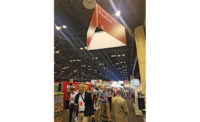The National Fire Protection Associations fledgling advisory committee on high-rise safety may ultimately advocate more code changes relating to building operations and maintenance than physical changes, said its chairman at the groups kickoff meeting in Boston.
 |
| QUITER |
"I think the need has been established to look at" high-rise fire safety, not just because of the events of Sept. 11, 2001, but because of two recent fires in Chicago and one in Caracas, said James L. Quiter, chairman of NFPAs High-Rise Building Safety Advisory Committee, at the Dec. 14-15 meeting. "But I dont think were going into this with a pre-established notion there will be major code changes coming out of it." The fire protection engineer is a principal in the San Francisco office of ARUP.
Quincy, Mass.-based NFPA, which develops model building and life safety codes, charged the group to identify needs and emerging issues within the tall building environment and to make recommendations for change to NFPAs standards council. The goal is to make sure that the code and standard development process reflects the latest thinking and technology. "The group is charged with considering the big-picture and how all the different pieces fit together, or not," says Robert Solomon, NFPAs assistant vice president and organizer of the committee.
|
The list of topics on the table is extensive, including everything from elevator use to fire tests, to progressive collapse, to fire department communications, in ordinary emergencies and extreme events. Dealing with the issue of hostile acts is by itself a "challenge," said Solomon. The group is "trying to come to terms with" the extent to which hostile acts should be addressed in codes or voluntary guidelines, he said.
In addition to Quiter, the group, handpicked to represent various disciplines and constituencies, consists of Richard W. Bukowski, a senior engineer with the National Institute of Standards and Technology, Gaithersburg, Md.; Jon D. Magnusson, chairman-CEO of Magnusson-Klemencic Associates, Seattle, representing the National Council of Structural Engineers Associations; Jack J. Murphy, of the Fire Safety Directors Association of New York, New York City; Steven M. Nilles, a principal of architect Lohan Caprile Goettsch, representing the Council on Tall Buildings and Urban Habitat, both Chicago; Sally Regenhard, co-chair of the Skyscraper Safety Campaign, a New York City consumer group; Wes Shoemaker, of Canadas Winnipeg Fire Dept.; and Jake Pauls of the Building Use and Safety Institute, Silver Spring, Md., representing the American Public Health Association. NFPA may ask an owner-developer, a security specialist, another consumer group and a firefighter to join.
The committee plans to convene again May 3-4 to evaluate recommendations of NISTs WTC investigation. The 10,000-page report, several months overdue, is expected to be issued for public comment by March 1.


Post a comment to this article
Report Abusive Comment